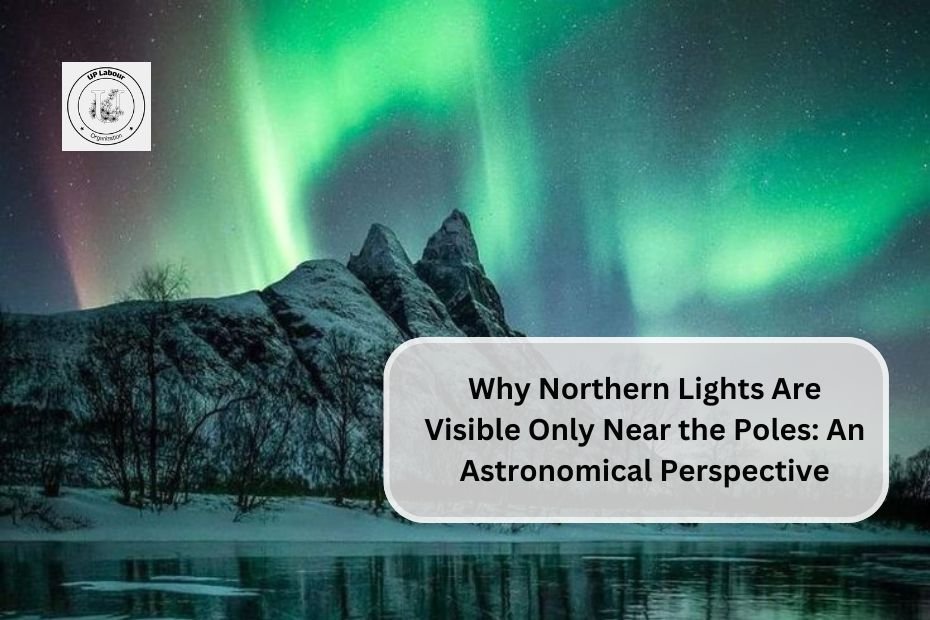The Northern Lights, or aurora borealis, are one of nature’s most mesmerizing spectacles, primarily visible in polar regions. This phenomenon occurs due to the interaction between charged particles from the sun and Earth’s magnetic field and atmosphere. Understanding why auroras are predominantly observed near the poles requires an exploration of several key astronomical factors.
The Role of Solar Wind and Charged Particles
The sun continuously emits a stream of charged particles known as the solar wind. This wind consists mainly of electrons and protons that travel through space at high speeds. When these particles reach Earth, they interact with the planet’s magnetic field, which acts as a protective shield.
Magnetic Field Interaction
Earth’s magnetic field is strongest at the poles and weakest at the equator. When solar wind particles encounter this magnetic field, they are deflected towards the polar regions. This deflection occurs because Earth’s magnetic field lines converge at the poles, guiding charged particles into the atmosphere where they can create auroras.
- Magnetosphere: The region surrounding Earth where its magnetic field dominates is called the magnetosphere. When solar wind intensifies—especially during solar flares or coronal mass ejections (CMEs)—the magnetosphere becomes disturbed, leading to enhanced auroral activity.
The Auroral Oval
The auroras form an oval-shaped region around each magnetic pole known as the auroral oval. This oval is centered on the geomagnetic poles, which are slightly different from the geographic poles. The shape and position of this oval can change based on solar activity:
- Expansion During Storms: During strong geomagnetic storms caused by heightened solar activity, the auroral oval can expand equatorward, allowing auroras to be visible at lower latitudes than usual.
- Visibility: The brightness and visibility of auroras are directly correlated with geomagnetic activity levels. Higher levels of activity (indicated by a higher Kp index) result in more intense and widespread auroras.
Atmospheric Interaction
Once solar wind particles are directed toward the poles, they collide with gases in Earth’s upper atmosphere (primarily oxygen and nitrogen). These collisions excite the gas molecules, causing them to emit light—a process that generates the colorful displays we associate with auroras.
- Color Variations: The colors of the aurora depend on which gas is involved and at what altitude the collisions occur. For example:
- Oxygen at higher altitudes produces red and green lights.
- Nitrogen can result in purples and blues.
Why Not Near the Equator?
The reasons auroras are not typically visible near the equator include:
- Weak Magnetic Field Influence: As mentioned earlier, Earth’s magnetic field is weaker at lower latitudes. This means that solar wind particles are less likely to be funneled into the atmosphere in these regions.
- Geographical Positioning: The geomagnetic poles are located closer to the Arctic and Antarctic regions. Consequently, areas further from these poles experience less interaction with charged particles from solar winds.
- Atmospheric Density: The density of Earth’s atmosphere decreases with altitude; thus, there are fewer gas molecules for solar particles to collide with outside polar regions, resulting in diminished auroral displays.
Conclusion
The visibility of Northern Lights near the poles is a fascinating interplay of solar activity, Earth’s magnetic field dynamics, and atmospheric interactions. The concentrated influence of Earth’s magnetic field at higher latitudes directs charged particles from solar wind into the atmosphere where they create stunning light displays. As we continue to study these celestial phenomena, we gain deeper insights into not only our planet’s atmospheric processes but also the broader dynamics of space weather that affect our environment. Understanding these factors enhances our appreciation for this natural wonder while highlighting its dependence on specific astronomical conditions.

